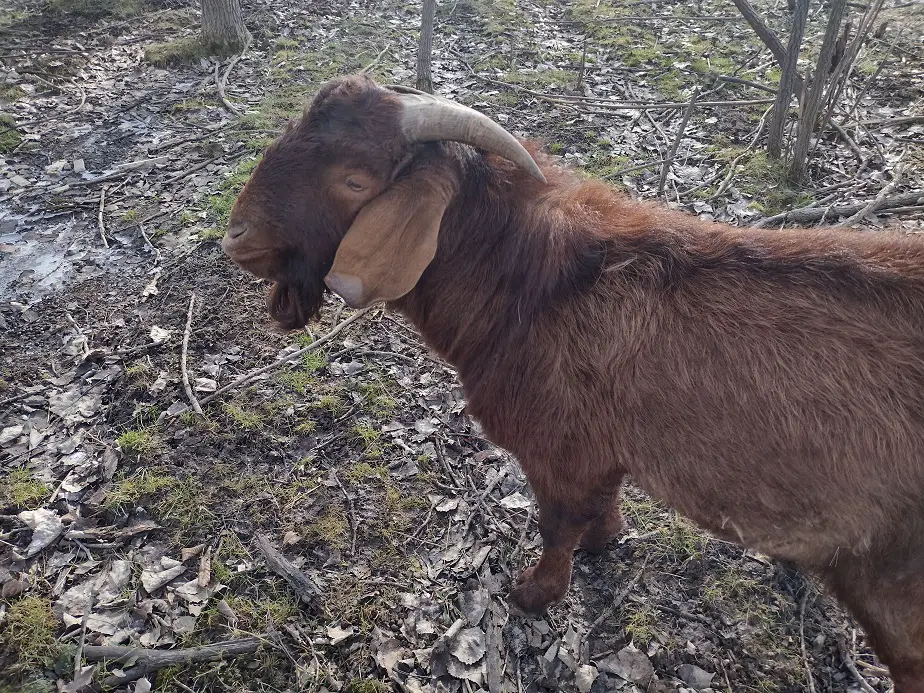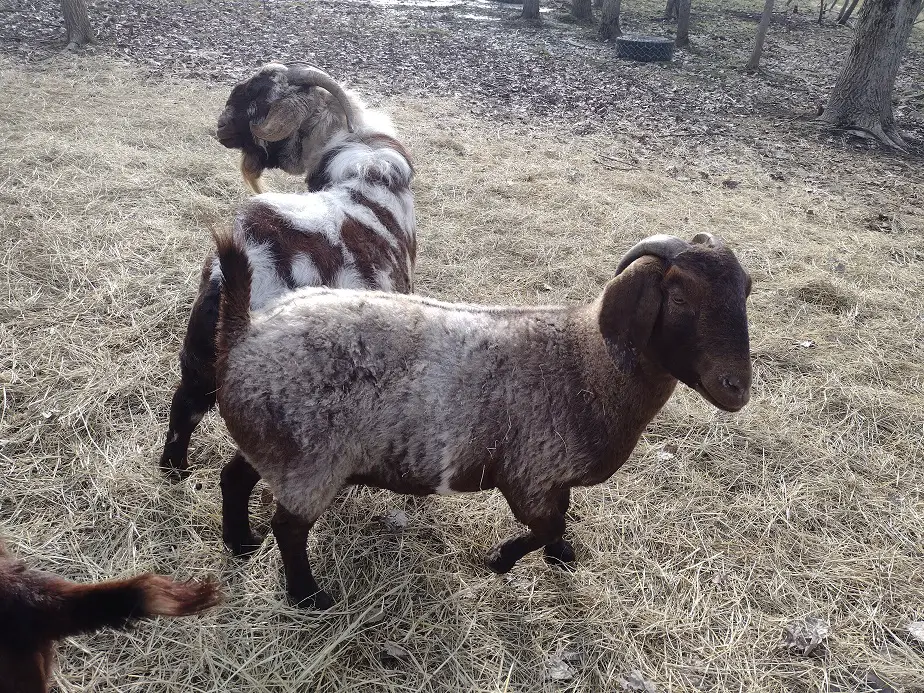Goats are a lesser common livestock in the US, and we seem to argue over when to butcher them.
Goats are butchered at 3 months in most of the world. Modern commercial operations prefer to butcher at 8 months for a larger carcass, but it’s less efficient at that age. Younger animals use feed more efficiently but are worth less at a market. If raising to sell, you should consider the larger carcass.
So, let’s talk about the different breeds, feeds, and methods that impact butcher age.
When to Butcher a Grass-Fed Goat
Grass-fed goats are usually butchered young, between 3 and 5 months old. At that age, the meat is referred to as kid meat and it’s a more tender goat meat. The reason for butchering them young is primarily ethnic tradition. Oftentimes, “that’s the way it’s done” is the common reasoning.
In a grass-fed scenario, you’re buying little to no grain or pelleted feed. Outside of the US, grass-fed goats are raised on mainly wild pasture but in the US, goat owners seem to prefer buying hay for feed. I’m talking more about the first method.
A pasture only has so much available fodder. Butchering goats young helps ensure that an area doesn’t get over-grazed. Also, if you are managing a larger herd, butchering young helps to greatly reduce the overall workload. Let’s not forget that it’s a lot easier to butcher a small goat than a large goat.
Younger animals are more efficient with feed. That’s another very big reason why goats are butchered young in areas with less wealth. A 3-month-old goat is twice as efficient with feed as a 7-month-old goat. Grass-fed or pastured goats grow and gain weight slowly.
Many farmers simply find it more sensible to butcher them young (3-5 months) instead of going another 3-5 months and three times the feed for an additional 15 pounds of meat. Goats are lean animals and don’t have a lot of meat on them.
Goats are mostly gut, yielding only 35 percent of their live weight after butchering. Grass-fed goats of any breed are less muscular than goats of the same breed fed a high-protein high-energy concentrated ration. A good growing, muscular goat can yield 15 pounds of meat at 3 months old.
If the pasture is of lesser quality, it will take closer to 5 months. Basically, in many scenarios, it’s simply not worth it to keep the animals much longer than that.

When to Butcher a Comercial-Breed Goat
Comercial-breed goats are often butchered at 8-10 months old. When raised on concentrated feeds. They grow more muscular and faster and result in a more impressive carcass that can sell for a higher cost per pound. But, it’s quite expensive to produce and the profit margins are smaller than butchering younger.
A good commercial breed like their boer can gain about 10 to 12 pounds a month in an average small-scale operation. Most goat farmers I know have a goal weight of 100 pounds by 8-9 months. Depending on their muscular condition, that’s usually 35-45 pounds of meat.
Now, that’s assuming you are feeding at least a partial diet of grain and protein supplements. It’s more expensive to do but will get you bigger carcasses. Some of the best animals in the best conditions can reach a growth of 15 pounds a month, or 120 pounds at 8 months.
The more you push for productivity, the more dollars per pound it will cost you. That’s why it’s more the larger commercial operations that do well with this model. They run at a very slim profit margin per animal and have to raise a large number of animals to make up for that.
I recommend that most small-scale goat farmers use a more holistic approach when feasible. If you have free feed (pasture grasses, leafy shrubs, tree tops, lawn clippings or even garden stubble) use it. They will grow slower but it’s more feasible for the average homesteader that way.
Equipment to Butcher a Goat
All you need to butcher a goat is a sharp knife, freezer bags, and a work area. Your work area can be a table or a place to hang a goat up. First, dispatch, skin, and gut the animal. Next, portion the carcass into primal cuts, rinse them, and freeze or otherwise store the meat.
A goat can be dispatched either by knife or by bullet. A sharp knife is preferred and used in most of the world. Cutting the carotid artery just under the chin is probably the best way to dispatch a goat. It’s cleaner and safer than a bullet.
If you are using a bullet, then a small caliber like a 22lr is the best choice. Be sure to hit the brain. The brain is located between the eyes and ears. There are two target areas.
- The forehead from the front, slightly above the eyes, going down towards the neck.
- The ear canal from the side, angled slightly up (better on goats with large horny foreheads)
I personally use a knife now to dispatch all our livestock. It’s quick, clean, and quiet. For goats, slip a rope over the neck and tie it up very short to hold them in place. With a sharp knife, make a smooth cut as deep as you can in the front of the neck just under the head. If necessary, make a second quick swipe until the artery is severed.
When the animal is finished bleeding, either hoise it up or set it on a clean table to work. If you aren’t sure what you are doing, ask a hunter to help you. Butchering a goat is a lot like butchering a deer. They are roughly the same size, shape, and have the same cuts of meat.

